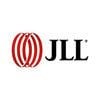Three new factors influencing the value of buildings
Investors are now thinking differently about what sustainability looks like in today’s prime real estate
There’s a new type of best-in-class building in town – one which responds to evolving sustainability demands from businesses, employees and wider society.
As investors search for buildings that will future-proof their portfolios, they’re paying closer attention to new risk factors linked to climate change while thinking more broadly about the social and health impact of their real estate.
It means that factors like improving resilience, reducing carbon emissions, and promoting employee wellbeing are playing a bigger role in determining a building’s financial value and the income it generates. Indeed, the UK’s Royal Institute of Chartered Surveyors recently updated its valuations guidance to place greater emphasis on a building’s sustainability credentials.
“The role of buildings in creating a more sustainable future is now in the spotlight,” says Lori Mabardi, ESG research director at JLL. “Stakeholder pressure is rising where regulators, occupiers, lenders and investors are expecting more from the built sector.”
So how are these new factors influencing the conversation?
1. Tackling climate risk and resilience
From floods to heatwaves, investors are increasingly aware of the direct impact of climate change on real estate portfolios.
More owners are assessing their portfolios early, as well as modelling future risk, says Mabardi.
“We’ve seen extreme weather grow four-fold in the past four decades in the U.S alone,” she says. “Real estate investors, landlords and occupiers are increasingly understanding that resilience needs to come into the equation. This could mean taking measures to address areas of weakness in the asset itself, or taking a portfolio view and evaluating exposure to a number of risks like wildfire or drought.”
As investors and occupiers increasingly use a climate-risk lens when considering new markets and buildings, insurance companies and lenders will refine their pricing and lending accordingly.
What’s more, countries like the UK, France, Germany and Canada have established some level of mandatory climate-related financial risk disclosure – a move currently under discussion in other countries including the U.S.
Governments and cities are now starting to take action. In the U.S., Miami last year appointed its first chief heat officer, while Canada recently announced a raft of new climate measures including a carbon tax of CAD$40 per metric ton.
2. Cutting carbon footprints
As more companies unveil net zero plans and more regulations come into play, reducing carbon emissions from buildings is becoming a priority. As part of its 2040 net zero goals for its real estate portfolio, investment manager Nuveen is turning to renewable energy and implementing energy efficiencies.
Buildings that fail to address their carbon footprint will soon start to fall behind, says Emily Chadwick, ESG risk & valuation director at JLL.
“There are dozens of studies indicating a value differential associated with more energy efficient real estate,” she says. “However, decarbonizing an asset takes planning, investment, and time. Waiting to act exposes an asset to the risk of stranding and investors then risk a brown discount.”
Historically, green certifications have seen a sales premium of 7.6 percent and a rent premium of 6 percent, according to data from Dalton and Fuerst. Buildings with BREEAM Outstanding ratings recorded rent premiums between 4 percent and 11 percent and hit 100 percent pre-leasing compared to 50 percent for standard properties, JLL’s Return on Sustainability report found.
“But not all green certifications equate to a long-term low carbon footprint – some are more focused on initial sustainable design than ongoing operations – and taking this into consideration will reset the value conversation,” says Chadwick.
3. Promoting health & wellbeing for tenants
Buildings will increasingly be graded on their ability to not only support but also optimize the health, wellbeing and performance of the people using them.
“Healthy buildings are good for the bottom line,” says Mabardi. “Take cleaner air, for example, which helps boost energy and engagement levels among employees and consequently improves productivity.”
Research from Allen and McComber shows that in the U.S. alone, the savings and productivity gains from improved indoor environments are between $25 billion to $150 billion a year.
And increasingly that’s something companies are prepared to pay for. Effective rents for healthy buildings in the U.S. command between 4.4 percent and 7.7 percent more rent per square foot than peers that are not WELL or FITWEL certified, according to research by MIT’s Real Estate Innovation Lab.
And with the pandemic putting even more onus on healthy and sustainable spaces, it’s accelerated the longer-term shift in corporate and investor attitudes.
“Changing expectations mean that buildings need to meet new requirements, for people using them or the capital investing in them,” says Guy Grainger, Global Head of Sustainability Services & ESG at JLL. “Whether it’s health & wellbeing, climate risk or social impact, the future value of the building depends on getting these right.”
About JLL
For over 200 years, JLL (NYSE: JLL), a leading global commercial real estate and investment management company, has helped clients buy, build, occupy, manage and invest in a variety of commercial, industrial, hotel, residential and retail properties. A Fortune 500® company with annual revenue of $20.8 billion and operations in over 80 countries around the world, our more than 111,000 employees bring the power of a global platform combined with local expertise. Driven by our purpose to shape the future of real estate for a better world, we help our clients, people and communities SEE A BRIGHTER WAYSM. JLL is the brand name, and a registered trademark, of Jones Lang LaSalle Incorporated. For further information, visit jll.com.
